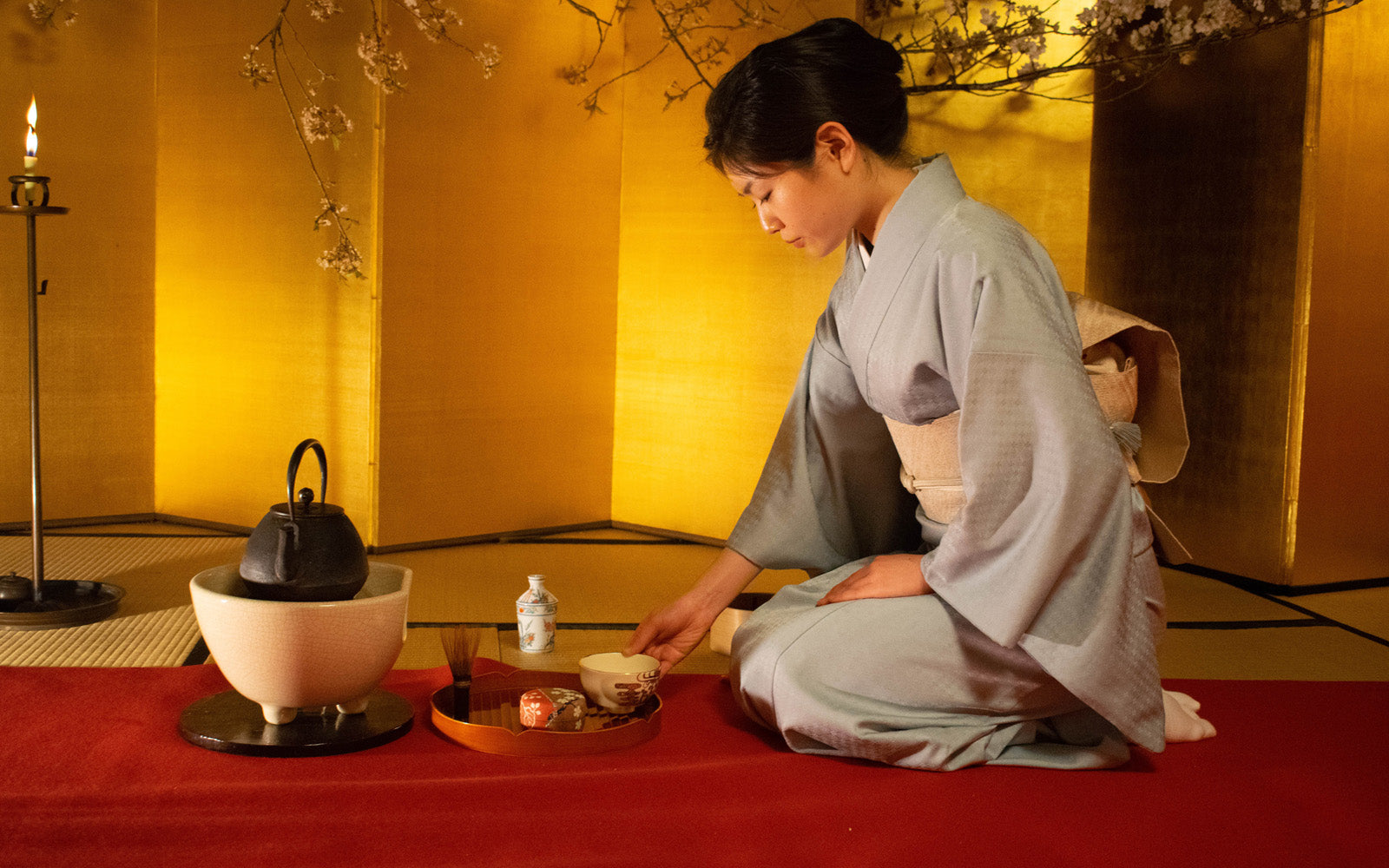
Sado (茶道) and the Art of Tea
At Maple & Moon one of our favorite moments of each day is when we take the time to slow down and enjoy a cup of tea. For us, it is one of the most simple ways to reconnect to the present and focus on the moment. With each sip we take comfort in the now.
The tea ceremony plays a significant role in Japanese culture and is a key part of the Japanese lifestyle. Commonly referred to as chadō or sadō (“way of tea”) or cha-no-yu (“hot-water tea”), the ceremony is one of three classical arts of refinement and focuses on finding beauty in everyday routine. During each ceremony, matcha green tea is ritualistically prepared and served with traditional Japanese sweets or Kashi. The principles of Zen Buddhism are strongly rooted in chadō, with an emphasis on mindfulness and the idea that simple actions lead to the awakening of our spirits.
Mastering the art of the tea ceremony is an exercise in discovering inner peace by elevating aspects of everyday life to a higher spiritual level. By creating a structured and peaceful environment and repeating certain actions, guests of a tea ceremony are able to reach a Zen-like state. A strong attention to detail allows participants to connect over a shared, intimate experience.

The tea ceremony was borrowed from China 900 years ago after the value of tea was realized by Ch'an monks. After discovering tea is a great resource for staying awake during meditation, the monks began incorporating tea into Zen practice. The art of the creation and consumption of tea quickly became a staple of Japanese culture, with various tea masters teaching the practice to new generations. There are currently three main schools of the tea ceremony which are called the Sansenke.
The actual ceremony takes place in a tea house (cha-shitsu), which is a rustic and refined space. The room is small and features a hanging scroll and fireplace (ro) used for heating the tea kettle. A simple flower arrangement is commonly present. Chabana ("tea flowers") is the floral style most often associated with tea ceremonies. The key to chabana is simplicity, and it is not uncommon to use just a single blossom in the display. Tea ceremonies often exhibit the same ritualized practices. Before entering the room, guests will take off their shoes. Food will be served, and then the host will light a charcoal fire to heat water in a kettle and cleanse the tea tools. The host will mix the powdered matcha tea and water with a bamboo whisk. The tea is then placed in a single bowl, which guests pass around in accordance to the ritual. When guests are engaged in the ceremony, the ritual creates peace and clarity and allows for a profound intimacy with one’s inner self and the other participants.



